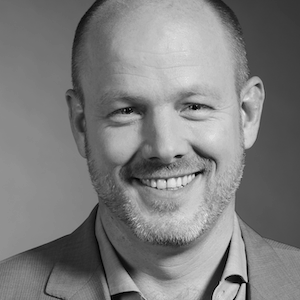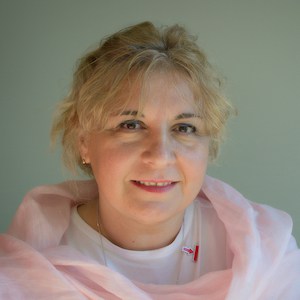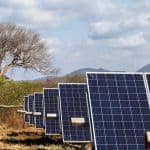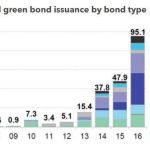Closing in on the SDG Home Stretch: A Q&A with Florian Kemmerich and Lucica Ditiu at SDG500
With just under 10 years remaining before the United Nation’s deadline on the Sustainable Development Goals (SDGs), the clock is ticking a little bit louder each day. But many key players, including UN entities, NGOs and private investors, remain undaunted in the face of this challenge.
On Jan. 22, a coalition of private and public sector actors came together to announce the launch of SDG500 – a first-of-its-kind, $500 million investment platform dedicated to achieving the SDGs. According to a press release announcing the initiative, impact asset manager Bamboo Capital Partners will be managing the six underlying funds that make up SDG500. These funds will target businesses in the agriculture, finance, energy, education and health care sectors across Africa, Asia, Latin America, and the Caribbean and Pacific regions.
Florian Kemmerich is Managing Partner at Bamboo Capital Partners, where he leverages his background in startups, fundraising and health care to help build organizations in the competitive global marketplace, through a portfolio of companies that span over 30 countries. Dr. Lucica Ditiu is Executive Director of the Stop TB Partnership, a UN-hosted organization whose mission is ending tuberculosis (TB), the world’s deadliest infectious disease. She is a physician and leader in the global fight against tuberculosis and other communicable diseases. In the interview below, Kemmerich and Ditiu share a behind-the-scenes look at SDG500, and how the initiative seeks to accomplish its aims by the year 2030.
Katie Beasley: With just a decade left to reach the benchmarks laid out by the SDGs, there has been no shortage of skeptics casting doubt on their achievability. What will be the role of SDG500 in accelerating their progress?
Florian Kemmerich: SDG500 is structured differently to other funds. It is structured from the bottom up and deliberately focuses on seed and early-stage financing. We have incorporated a blended finance structure to make it more attractive to mainstream investors.

Florian Kemmerich
The individual funds are complementary to one another and tackle most of the SDGs in one go. One of its main advantages is that it is fully scalable and can be replicated. This has been a three-year effort to get to this stage, but we are proud that we have developed a template for addressing the “missing middle” financing gap.
Lucica Ditiu: SDG500 represents the future in terms of how the global community, including the public and private sector, finance solutions to address critical barriers and challenges in tuberculosis, global health and global development. The way things function now is old-fashioned, constructed on old assumptions, and is not sustainable.
The SDGs are designed to meaningfully engage and leverage the private sector’s expertise and resources. However, the public sector remains the main payers for addressing the world’s most pressing problems – problems that affect everyone no matter who you are or where you live.
Traditional donors and everyday taxpayers alone cannot bear the burden and bridge the financing gap to achieve SDG 3 (ensure healthy lives and promote well-being for all at all ages), end TB (or any other diseases), and achieve Universal Health Coverage (UHC) by 2030. There is a huge amount of cash swirling around the world, and with the current COVID-19 situation, the global community must recognize that good health and well-being are the underlying foundation for a thriving economy and society.
SDG500 provides businesses and high net-worth individuals with the opportunity to put their money where their mouth is. Due to the way the underlying funds are structured, it has the potential to unlock significant new capital from the private sector.
KB: Why has the SDG500 investment platform chosen to home in on entrepreneurship in emerging and frontier markets as a way to close the $2.5 trillion SDG financing gap?
FK: The wealth of a nation is defined by its middle classes and population of SMEs. That is why it is crucial to invest in and support entrepreneurs in emerging and frontier markets, as we do in the Western world. There is the greatest need for investment in these markets, and they represent an amazing opportunity for us to invest at scale – and, especially in tech-driven companies, to leave a significant impact on previously underserved populations.

Lucica Ditiu
LD: The world is changing. Silicon Valley is no longer the only cradle for new ideas and innovations.
For example, many of the countries from the Global South with high TB, TB/HIV and multi-drug resistant (MDR-TB) burdens are developing strong innovation ecosystems and solutions to address their own barriers.
Stop TB Partnership is already working with startups, SMEs and various partners from India, Indonesia, Botswana and South Africa, among other nations. No one is better suited than these innovators – who have a front-row understanding of the challenges, the culture and the day-to-day struggles of the people in accessing and receiving affordable, quality, people-centered health care – to develop the tools and technologies needed to achieve our collective targets, goals and objectives.
KB: Bamboo Capital Partners will be managing SDG500’s six underlying funds. Florian, what do you anticipate being the primary challenges of managing six funds representing such diverse geographical regions and sectors?
FK: SDG500 is structured as a blended finance fund, and its beauty lies in the fact that it allows different partners and types of investors with different interests to sit together in the same vehicle. The challenge presented by blended finance applied to open-ended-structured funds resides in the ongoing management of the size of its different tranches. A degree of liquidity needs to be offered to investors in the senior tranches of the fund, while some proportionality between tranche sizes must be maintained in order to keep the risk-return profile of each tranche.
Additionally, having different investors with different interests does not only mean managing their financial interests, but also their philanthropic interests – some might be more interested in specific funds in contrast to the broader platform, or a certain asset class. The SDG500 platform offers that possibility.
KB: SDG500 is a unique example of private and public sector organizations coming together, across a breadth of sectors. In your view, what advantages does such a coalition hold in confronting the SDG financing gap?
FK: SDG500 aligns the interests of different partners in the same platform. This inclusive approach has been designed to raise more financing. We will be more effective as a collective than as individuals, collaborating with one another and working together for a common good. The platform’s funds will be targeting sectors which align and work towards the same theory of change, covering most of the SDGs. One of the main benefits of such a structure is its potential for scale.
LD: To achieve SDG 3, health care factors are one of the many determinants that we need to consider. We also need to look at socio-economic factors (education, work, income, community), health behaviors (diet, exercise, tobacco use), physical environmental factors – and how all these factors collectively impact and impede people from achieving good health and well-being.
That is the strength and uniqueness of SDG500. It brings together, through the various underlying funds, public and private sector partners with deep expertise and experiences across agriculture, education, energy, finance and healthcare.
KB: Health care innovation is a prominent focus area in sustainable development, and central to the mission of SDG500 coalition partner HEAL. Lucica, what are some of the ways that investing in health care technology specifically can help further development goals in emerging and frontier markets?
LD: Most clinics in high TB burden countries use outdated tools to provide care to those affected by TB. For example, many countries still use the microscope, which was invented in the 1800s, to diagnose people for the disease, which is mind-boggling.
Elon Musk can send a Tesla Roadster into space, but we still use a technology that was developed during the century of Beethoven and Napoleon? That is simply unacceptable. There are many new TB innovations being developed and commercialized. However, these new TB innovations take way too long to get to the countries and people who need them. According to the World Health Organization’s (WHO) 2018 Global Tuberculosis Report, lack of care-seeking, incorrect diagnosis, ineffectiveness and interruptions in treatment have led to:
- 5 million deaths in TB;
- Nearly 10 million people falling ill with TB (including 1 million children); and
- Nearly 500,000 people developing MDR-TB.
It is critical that we “re-imagine care” in high TB burden countries in order to end TB and achieve UHC by 2030 by:
- Implementing people-centered care models that make it as easy as possible for all people, including the most marginalized, to access affordable and quality care, and
- Pivoting to a more digitalized, virtual, and on-demand care model across disease areas.
While billions of dollars have been spent on health systems strengthening related activities, the COVID-19 situation has shown us how the global community and countries, low-, middle- and high-income alike, are not effectively prepared to concertedly and systemically address pandemic diseases, particularly ones that are airborne and respiratory-based.
HEAL will be supporting next-generation healthtech solutions like artificial intelligence, digital health, information and communications technology, and tele-care/tele-medicine platforms. It is our belief that these solutions will organically catalyze and force the systemic and behavioral changes required for the global community and countries to provide affordable, quality, people-centered care to all individuals, no matter who they are or where they live.
KB: Could you delve into the relevance and advantages of SDG500’s blended financing structure?
FK: Each fund in the SDG500 platform includes a catalytic first-loss layer designed to encourage and protect senior tranches of funding. Target returns are market returns, but the risk-reward is enhanced thanks to the first-loss protection. This allows us to invest and finance early-stage enterprises.
SDG500 allows us to combine both our impact mission and financial returns together in the same vehicle. None of these elements are new – all this has been proven over many years. However, assembling each component into a single platform makes SDG500 a unique and pioneering platform within the impact investing industry. We hope to inspire similar models for the future.
KB: What are some of the potential opportunities of SDG500’s gender lens focus? Will any particular fund out of the coalition’s six be taking the lead on its promotion?
FK: Gender justice is particularly important in the development of frontier and emerging market economies. That is why one of the funds in the SDG500 platform is entirely dedicated to gender justice.
The CARE SheTrades Fund, with CARE as the main partner, is a gender lens fund which will use debt and equity to invest in women-owned businesses in Asia. In addition to this designated fund, we have made gender diversity an integral part of the impact focus and measurement within all the funds. We are committed to supporting female business owners across all geographies. It is clear to us that supporting women in their endeavors improves the lives of all families, including single-parent families.
Katie Beasley is a communications specialist at the William Davidson Institute, NextBillion’s parent organization.
Photo courtesy of Braden Collum.



